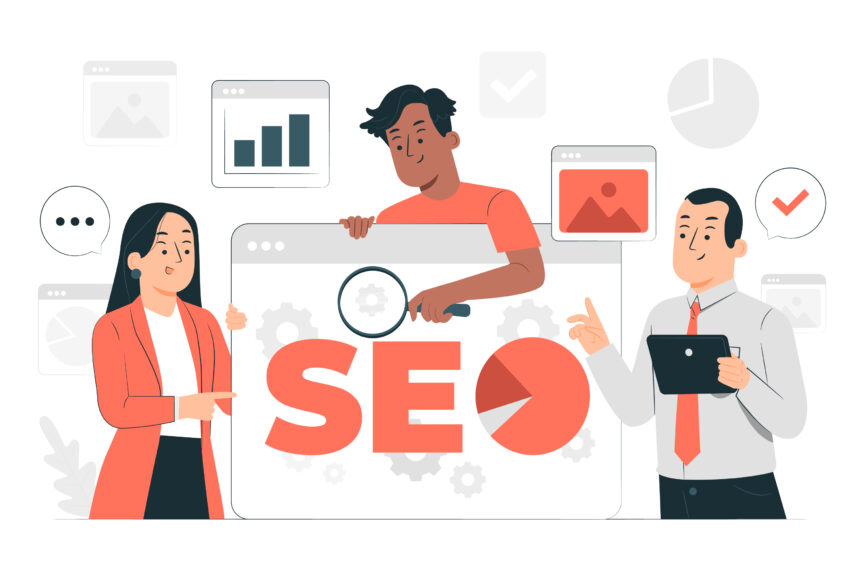Achieving top search rankings is no longer just about luck or having a pretty website. Both Search Engine Optimization (SEO) and Search Engine Marketing (SEM) play vital roles in getting your content noticed. When you combine these strategies, you create a powerful approach that boosts visibility, drives traffic, and lifts your conversions. In today’s competitive online world, sticking to just one won’t cut it. You need a smart mix of paid and organic tactics to stay ahead. Here’s the inside scoop on how to make your website stand out.
Understanding the Foundations of SEO and SEM
What is SEO? and How Does It Impact Search Rankings?
SEO is all about making your website easier for search engines to understand. It involves optimizing your pages through on-page techniques, building links off your site, and fixing technical issues. The main goal? To improve your ranking in organic search results. Good SEO helps your pages appear higher in search engine listings, bringing steady traffic over time. But keep in mind, search algorithms change all the time. Google rolls out updates that can shake up your rankings if you’re not prepared.
What is SEM? and Why Is It Essential for Faster Results?
SEM means paying for ads to get immediate visibility on search engines. Things like Google Ads (formerly AdWords) are common tools. With SEM, you create pay-per-click campaigns that put your website at the top, right where users see it first. It’s perfect for getting quick results, promoting new products, or targeting highly specific keywords. Many companies see their ROI soar with well-optimized SEM campaigns backed by clear data. It’s like putting your business in front of your customers instantly.
The Synergy Between SEO and SEM
Using both SEO and SEM together can actually boost your results. For example, paid ads can give you immediate traffic while your site’s SEO polishes your organic rankings. When you combine these methods, you reach more potential customers—both those searching naturally and those clicking paid links. Data shows businesses combining SEM and SEO outperform rivals relying on only one strategy. They’re more visible, get more traffic, and make more sales.
Keyword Research and Optimization Strategies
Conducting Effective Keyword Research
Start with tools like Google Keyword Planner, SEMrush, or Ahrefs. These help find keywords your audience uses. Focus on search intent—what people really want when they type in a phrase. Also, check how competitive each keyword is and how often people search for it. Target high-volume, low-competition keywords that fit your niche. Remember, not all keywords are created equal. Pick ones that match your goals and audience.
Long-Tail and Local Keywords for Competitive Advantage
Long-tail keywords—longer, more specific phrases—bring less competition and attract ready-to-buy visitors. Examples include “best coffee shops in downtown Dallas.” Local SEO keywords are also gold for small businesses. They help you appear when people nearby search for your product or service. A local bakery, for instance, can use “fresh bread in Brooklyn” to stand out in local searches. It’s a quick win for visibility and foot traffic.
On-Page Optimization Techniques
Use your target keywords in key places: titles, headlines, and meta descriptions. Make sure your images have descriptive alt text. Keep URLs short, clear, and keyword-rich. Internal links guide visitors and search engines through your content. Also, optimize your site for mobile and voice searches to match how people now find information. Proper on-page SEO ensures your content is easy for both Google and users to find and enjoy.
Technical SEO and Site Optimization
Enhancing Website Crawlability and Indexing
Search engines need to crawl and index your website to rank it. Use XML sitemaps and robots.txt files to control what gets scanned. Fix errors like broken links and duplicate content. Use canonical tags to tell Google which version of a page is the main one. Proper structured data helps Google understand your site better, boosting your chances of rich snippets in search results.
Improving Site Speed and User Experience
Website speed is no joke. A slow site can hurt your rankings and leave visitors frustrated. Google’s Core Web Vitals measure page speed, interactivity, and visual stability. Optimize images by compressing them without losing quality. Use browser caching to speed up return visits. Good navigation helps visitors find what they want fast, reducing bounce rates and keeping your rankings high.
Ensuring Mobile-First and Secure Website Design
Most searches now happen on mobile devices. Your website must work flawlessly on phones and tablets. Use responsive design and test mobile usability regularly. Switching to HTTPS is a must—Google favors secure sites. If you run a news or content site, consider AMP pages to load your pages faster on mobile. A mobile-first, secure website makes both users and search engines happy.
Content Marketing and Link Building Strategies
Creating High-Quality, Optimized Content
Content is the foundation of both SEO and SEM. Write articles, blogs, and product descriptions that match what users are searching for. Naturally include your target keywords—don’t stuff them—in a way that feels real. Use videos, pictures, and infographics to make your content more engaging. Great content not only ranks well but also gets shared, bringing more links and visitors.
Effective Link Building Techniques
Backlinks—links from other websites—are a major ranking factor. Earn them by guest posting, collaborating with partners, or reaching out to industry influencers. Check what your competitors are linking to and see if you can get similar backlinks. Avoid black-hat tricks like buying links, as they can lead to penalties. Focus on building real relationships and providing value through your content.
Leveraging Content for SEM Campaigns
Content is also great for paid advertising. Use high-quality blog posts or landing pages to boost your ad’s Quality Score in Google Ads. Well-optimized landing pages convert visitors into leads. Also, create remarketing campaigns that target users who engaged with your content before. This keeps your brand top of mind and increases chances of a sale.
Monitoring, Analytics, and Continuous Optimization
Tracking Key Performance Indicators (KPIs)
Regularly check your traffic, bounce rates, and conversions to see what’s working. Google Analytics and Search Console are free tools that show how visitors find and use your site. Use ad platform dashboards to track your paid campaigns. Set clear goals—such as increasing organic traffic or reducing cost-per-click—and measure your progress.
Analyzing Competitor Strategies
Spy on your competitors using tools like SEMrush or Ahrefs. Find out which keywords bring them traffic and which backlinks they’ve earned. Look for gaps in their strategy—areas where you can do better. For example, if they’re not ranking well locally, target niche local keywords. Stay alert so you can adapt your tactics quickly.
A/B Testing and Ongoing Strategy Refinement
Test everything—ad copy, landing pages, headlines, keywords. Small changes can lead to big wins. Adjust bids and targeting based on performance data. Stay updated on search engine algorithm changes and market shifts. Continuous tweaking helps you maintain or improve your position in search results.
Conclusion
Getting to the top of search rankings requires more than just one trick. You need a strong combo of SEO and SEM that covers all bases—keyword research, technical health, quality content, and ongoing analysis. Combining organic and paid strategies creates a snowball effect that boosts your visibility and drives real results. Keep learning, testing, and adapting to stay ahead in the race. Your website’s top spot is within reach, if you make the right moves daily.









